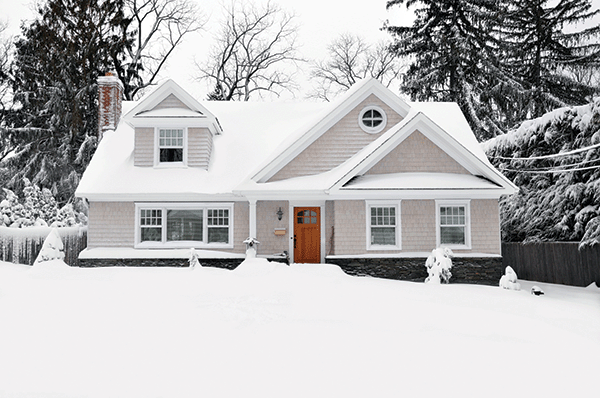Blog
Weatherization Tips from the Ground Up: Attics, Roofs, Ducts, and Vents

This blog is the third post in our short series on home weatherization tips for the heating season. Last time, we explored weatherization opportunities throughout your living spaces. Now, we’re heading upward — to the attic and roofline — to make sure you’re not only comfortable as the temperature cools but mitigating the risk of destructive ice dams this winter.
Many of the same weatherization principles that apply to your living areas also apply to your attic, roof, and other points of exterior penetration like plumbing vents and chimneys. Because these spaces are often out of sight — and out of mind — they’re easy to overlook until bigger issues appear.
Why look up?
Heat naturally rises, and without proper insulation and air sealing in the right places, that heat can escape through your attic and roof. As warm air rises and leaks out, cold air is drawn in to fill the void created by the departure of the air you paid to heat. This constant exchange of warm and cold air creates extra work for your heating system as it tries to maintain a steady temperature. Cold drafts often sneak in through gaps in lower parts of the home — around rim joists, windows, or unsealed doorways (you can refer to the first post of this blog series to learn more about basement weatherization).
With good weatherization lower in your home, you may feel comfortable even if your attic isn’t insulated properly. Even if you don’t feel cold drafts, cold air is likely still working its way in, and you may not notice that your heating system is working harder than necessary to keep you comfortable. What this means for you is higher energy costs as your heating system works to maintain a steady indoor temperature if heat can slowly escape from your roof and attic.
The infamous ice dam.
Beyond energy loss, there’s one other strong reason to address attic and roof insulation — ice dams. Ice dams can form when warm air from inside a home leaks into the attic and melts snow on the roof. If enough water refreezes when it reaches the cold edge of the roof, an ice dam can form. Water damage on walls and ceilings occurs when water trapped behind the ice dam backs up under shingles and runs down into the home. Raking your roof can help you avoid ice dams, but can be difficult and missing a storm can be an issue. Electrical heat tape can prevent ice dams, but can be expensive to operate. Weatherizing your home can eliminate ice dams while reducing energy bills and increasing comfort.
It’s all about insulation.
The best defense against ice dams is prevention. Proper insulation and air sealing in your attic or along the underside of your roof minimizes heat loss, helping maintain consistent roof temperatures and prevents melting and refreezing.
Proper insulation can take several forms. Under newly adopted building codes in Maine, attic insulation should usually be rated as “R60.” This could either be a spray foam, loose cellulose, or fiberglass batting — or a combination of these — at a given thickness to achieve the R60 value.
Adding adequate insulation to your attic — or the underside of your roof if you have vaulted ceilings — helps keep heat where it belongs: in your living spaces. This not only prevents ice dams but also improves your overall home efficiency so you can save money and stay comfortable all year long. That’s right, this insulation can help keep your living spaces cooler in summer too!
As we’ve mentioned in previous weatherization blogs, any place where heated and unheated spaces meet is an opportunity for insulation and air sealing. Sealing gaps around chimneys, ducting, and exhaust and plumbing vents is also critically important.
It never hurts to call on an expert.
For the best results, it’s always a good idea to consult a professional. Larger-scale weatherization projects can be hard to do alone. Anyone interested in this kind of project can find an experienced contractor through our Residential Registered Vendor (RRV) Locator Tool. RRVs can help you plan and complete your project and can also identify if your project is eligible for an Efficiency Maine weatherization rebate.
By taking time to weatherize your attic, roof, and vents, you’ll prevent unnecessary heat loss, reduce the risk of ice dams, and save money throughout the heating season.
If you find this blog post useful, consider reading our post on weatherization tips for the basement or living spaces.
Additional energy efficiency tips are also outlined in the Efficiency Maine Energy Efficiency Tips Booklet. To order a free printed copy of the booklet, email info@efficiencymaine.com, call 866-376-2463, or select it from our online order form.
